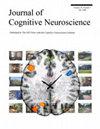论感觉运动经验在面部表情感知中的作用。
IF 3.1
3区 医学
Q2 NEUROSCIENCES
引用次数: 0
摘要
人类能够迅速而毫不费力地识别他人的面部表情。尽管我们对如何感知表情已经有了很多了解,但面部经验在塑造这一非凡能力方面所起的作用仍不清楚。我们对表情的感知是否与我们自己如何做出面部表情有关?如果我们自己擅长做同样的表情,我们是否更善于识别他人的表情?如果我们完全不会做面部表情,是否会影响我们识别他人面部表情的能力?本文旨在通过阐述面部经验与面部表情识别之间的联系来研究这些问题。文章对相关文献进行了全面评估,并研究了认为面部表情的制作和识别之间存在联系的三种主要理论。首先,最近对莫比乌斯综合症患者的研究支持面部能力(即移动面部做出面部表情的能力)在面部表情识别中的作用。其次,运动模拟理论认为,人类通过暗中模仿观察到的表情(没有明显的运动动作)来识别他人的面部表情,这种面部模仿有助于我们识别和感受相关的情绪。最后,面部反馈假说提供了一个框架,即在模仿观看到的面部表情时,通过面部肌肉的本体感觉反馈来增强情绪体验。本文介绍了支持和反对这些理论的证据,以及未来研究面部体验在面部表情感知中的作用时需要考虑的一些因素和悬而未决的问题。本文章由计算机程序翻译,如有差异,请以英文原文为准。
On the Role of Sensorimotor Experience in Facial Expression Perception
Humans recognize the facial expressions of others rapidly and effortlessly. Although much is known about how we perceive expressions, the role of facial experience in shaping this remarkable ability remains unclear. Is our perception of expressions linked to how we ourselves make facial expressions? Are we better at recognizing other's facial expressions if we are experts at making the same expressions ourselves? And if we could not make facial expressions at all, would it impact our ability to recognize others' facial expressions? The current article aims to examine these questions by explicating the link between facial experience and facial expression recognition. It includes a comprehensive appraisal of the related literature and examines three main theories that posit a connection between making and recognizing facial expressions. First, recent studies in individuals with Moebius syndrome support the role of facial ability (i.e., the ability to move one's face to make facial expressions) in facial expression recognition. Second, motor simulation theory suggests that humans recognize others' facial expressions by covertly mimicking the observed expression (without overt motor action) and that this facial mimicry helps us identify and feel the associated emotion. Finally, the facial feedback hypothesis provides a framework for enhanced emotional experience via proprioceptive feedback from facial muscles when mimicking a viewed facial expression. Evidence for and against these theories is presented as well as some considerations and outstanding questions for future research studies investigating the role of facial experience in facial expression perception.
求助全文
通过发布文献求助,成功后即可免费获取论文全文。
去求助
来源期刊
CiteScore
5.30
自引率
3.10%
发文量
151
审稿时长
3-8 weeks
期刊介绍:
Journal of Cognitive Neuroscience investigates brain–behavior interaction and promotes lively interchange among the mind sciences.

 求助内容:
求助内容: 应助结果提醒方式:
应助结果提醒方式:


